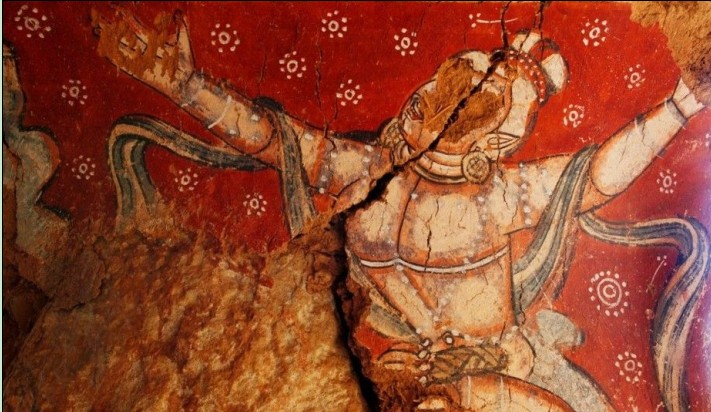Three-dimensional digital technology integrates with cave temples

Fresco in Longmen Grottoes
In recent years, archeologists have gradually begun making use of three-dimensional imaging technology, and it is now widely used in cave temples. The Dunhuang Academy’s ongoing digitization of the Mogao Caves and the “Longmen Grottoes Scanning Project,” jointly conducted by the Research Institute of Longmen Grottoes and the Key Laboratory of Machine Perception at Peking University (sponsored by the Ministry of Education), have both made great progress in their application of such technology. Although the cave temple archeology has entered the digital age, it still faces to a number of challenges.
Modern survey techniques
Cave temple research encompasses many fields—art, religion, history, and architecture to name a few. Given this broad range of discipline, archeologists who study sites like the Mogao Grottoes need to synthesize knowledge from the social sciences and the humanities with knowledge and techniques from the natural sciences. An expert stressed the range of objects and surfaces 3D scanning can be applied to: whole sites, excavated areas, cave stones, statues, artifacts, etc. From these scans, a whole host of digital representations are possible, including line maps, contour maps, digital elevations models, orthophoto maps (aerial-view maps which convey three dimensionality) and 3D images. The sheer potential will inevitably exert a tremendous on archeology and cultural heritage conservation.
Liu Jianguo, a researcher at the Chinese Academy of Social Sciences’ Institute of Archeology and a deputy director of the Center for Scientific Archaeology, expressed that the main function of 3D scanning is archive data and exhibit three-dimensional images. First of all, he explained, 3D display can help experts observe the part or the whole sites from different angles, reminiscent of the feel an expert would have doing fieldwork on the scene. Moreover, 3D models can deepen the public’s impressions on cultural heritage conservation while data from the models can be used for archiving the spatial attributes of cultural relics.
In particular, Liu mentioned that sites are continuously damaged during the excavation process, so important archeological excavation projects on cave temples need to implement 3D scanning several times at different stages. In this way, archeologists will be able to preserve specific information and set up a real 3D model for the further research and display, he said.
Case study
At the end of 2012, Xu Ruiqing, a professor of College of Computer Science and Technology at Zhejiang University, won sponsorship from the 2012 Annual National Social Science Fund for a project entitled “research on theories, methods and applications of 3D digital technology in Chinese cave temple archeology.” Previously, the cave temple archeological team from the Cultural Heritage Research Center at Zhejiang University (ZJU) and Institute of Cultural Relics and Archeology in Ningxia Hui Autonomous Region initiated a five-year joint investigation in Xumishan Grottoes, which will be concluded in 2017. Between April and September 2012, the joint investigation made preliminary results in fieldwork. In 2012, the cave temple archeological team of the ZJU’s Cultural Heritage Research Center cooperated with Fangshan Relics and Yunju Temple Center for Cultural Studies for an archeological survey in Leiyin Cave. Diao Changyu, an assistant researcher of the Center for Scientific Archaeology at ZJU’s Cultural Heritage Research Center, said that the application of digital technology in Xumishan Grottoes and Leiyin Cave was very successful, enabling researchers to gained objective results and abundant line maps from the survey.
Liu Jianguo said that he and his colleagues scanned seven grottoes of Jinta Temple and Mati Temple in Zhangye, Gansu. Subequently, with the support of a technical company, they established a real 3D model of these seven grottoes. They plan to continue their 3D scanning on the Tuyugou Grottoes in Turpan and Tongzi Temple in Taiyuan.
Although the prospects of 3D digital technology are amazing, some experts still show their concerns over the level of integration between archeology and technology. Some of used the metaphor “two pieces of isolated skin” to describe the difficulties in coexistence between modern and traditional techniques. Liu asserted that the only solution for overcoming this situation is enhancing the cooperation between archeologists and technicians. Having a better understanding of one’s work and gaining experience from one’s work is a good attitude to cope with any difficulty, Liu added.
The Chinese version appeared in Chinese Social Sciences Today, No. 417, Feb. 20, 2013
Translated by Zhang Mengying
